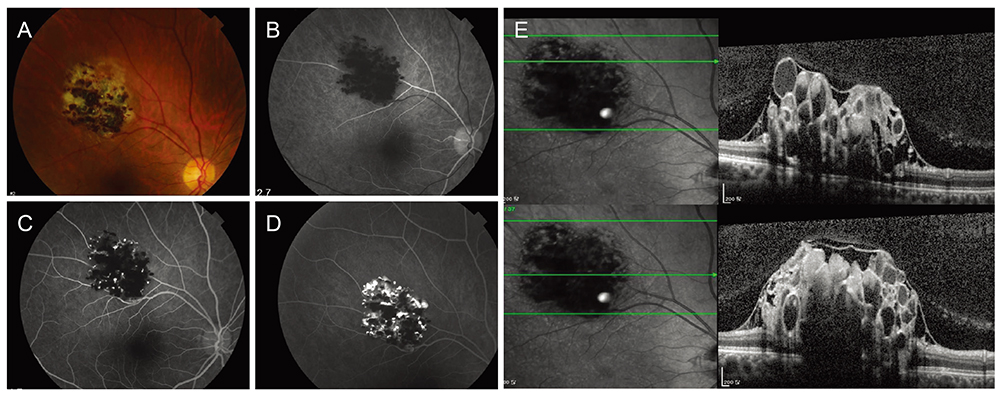Korean J Ophthalmol.
2017 Jun;31(3):275-276. 10.3341/kjo.2017.0013.
A Case of Retinal Cavernous Hemangioma Diagnosed with Spectral Domain Optical Coherence Tomography
- Affiliations
-
- 1Department of Ophthalmology, Samsung Medical Center, Sungkyunkwan University School of Medicine, Seoul, Korea. swkang@skku.edu
- KMID: 2379885
- DOI: http://doi.org/10.3341/kjo.2017.0013
Abstract
- No abstract available.
Figure
Reference
-
1. Gass JD. Cavernous hemangioma of the retina: a neuro-oculo-cutaneous syndrome. Am J Ophthalmol. 1971; 71:799–814.2. Naftchi S, la Cour M. A case of central visual loss in a child due to macular cavernous haemangioma of the retina. Acta Ophthalmol Scand. 2002; 80:550–552.3. Shields JA, Eagle RC Jr, Ewing MQ, et al. Retinal cavernous hemangioma: fifty-two years of clinical follow-up with clinicopathologic correlation. Retina. 2014; 34:1253–1257.4. Messmer E, Laqua H, Wessing A, et al. Nine cases of cavernous hemangioma of the retina. Am J Ophthalmol. 1983; 95:383–390.5. Pringle E, Chen S, Rubinstein A, et al. Optical coherence tomography in retinal cavernous haemangioma may explain the mechanism of vitreous haemorrhage. Eye (Lond). 2009; 23:1242–1243.
- Full Text Links
- Actions
-
Cited
- CITED
-
- Close
- Share
- Similar articles
-
- Fundus Autofluorescence, Fluorescein Angiography and Spectral Domain Optical Coherence Tomography Findings of Retinal Astrocytic Hamartomas in Tuberous Sclerosis
- A Case of Ocular Toxoplasmosis Imaged with Spectral Domain Optical Coherence Tomography
- Spectral-Domain Optical Coherence Tomography Findings in Acute Central Retinal Artery Occlusion
- Short-Term Clinical Observation of Acute Retinal Pigment Epitheliitis Using Spectral-Domain Optical Coherence Tomography
- Spectral-domain Optical Coherence Tomography of Combined Hamartoma of the Retina and Retinal Pigment Epithelium in Neurofibromatosis


